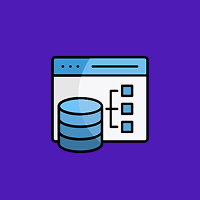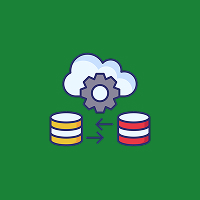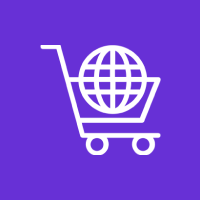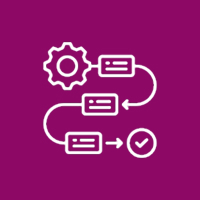In today’s interconnected, digitally powered marketplace, having a compelling web and mobile presence is no longer a choice. It’s a requirement. Organizations feel compelled to create applications rapidly, affordably, and for multiple platforms. They need to do so without compromising quality or user experience. Cross-platform development has become a sensible and compelling answer to this predicament.
It enables businesses to create apps that run flawlessly on iOS, Android, and web browsers alike—all from a single codebase.
This has a dramatic effect on development speed, increases efficiency, and enhances return on investment.
It’s a significant step in the right direction for businesses seeking to remain competitive in a rapidly changing digital environment.
Let’s take a closer look at how cross-platform development enhances business efficiency—and why cutting-edge companies are making it the way of the future.
1. One Codebase Means Streamlined Development
Traditionally, building individual native apps on each platform means having several codebases that one must develop and support. It is time-wasting, expensive, and a consumer of resources. Cross-platform development allows developers to write once and run everywhere, economizing time and complexity.
Having a solid foundation like Flutter, React Native, and Xamarin allows native performance and UX across many platforms from a single codebase. That means shorter build times, less redundancy, and thereby less development effort.
2. Lower Development and Long-Term Maintenance Cost
Having multiple programs to take care of is double (or triple) the work whenever there is a need for an update, a patch, or a feature release. Cross-platform keeps the fixes and updates in the middle, nice and easy. With one team writing one application codebase, corporations save huge amounts of development cost and support overhead.
These dollars can be invested in central business activities such as marketing, acquiring users, and new feature development—getting your technology budget to stretch farther without reducing quality.
3. Speed to Market Becomes a Competitive Advantage
The faster you can get your product out the door, the faster you can receive user feedback, iterate, and refine. Cross-platform development gives companies a sped-up development cycle, allowing them to get products out the door more quickly than native development.
This accelerated turnaround also allows business to react to customer demand or market shift in real time, keeping up with competition and remaining relevant in high-speed industries.
4. Uniform User Experience Across Devices
Uniform user experience across devices and platforms builds customer trust and brand identity. Cross-platform development libraries include libraries and UI that provide a uniform look and feel independent of operating system or device.
Having a common design not only makes it easier to use but also reduces onboarding and frustration when users may be switching between devices. Well-coordinated UX strategy means more customer satisfaction and better retention rates.
5. Reduced Testing and Quality Assurance
With only one test to verify, QA teams can target a group of functionalities, resulting in faster test cycles with fewer defects. Identification and fixes are easier in early cycles of development, resulting in increased product stability and performance.
Moreover, cross-platform application frameworks and automated testing software also simplify faster functional and layout verification across multiple devices and OSs, resulting in increased efficiency and reliability.
6. Centralized Feature Releases and Update Rollouts
Once the time actually arrives to push out updates or feature additions, having a unified codebase is a tremendous advantage. The engineers only need to push out the improvements once and deploy them to all platforms simultaneously. They avoid the agony of version control and staged rollout schedules most native app development projects embark on.
It also makes it possible for users on all platforms to have access to the same feature set and performance profile, resulting in improved user satisfaction and reduced support loads.
7. More Reach with Less Effort
Cross-platform apps by nature are coded to be interesting to both Android and iOS users—two factions that have influence in the mobile sector. Rather than coding for one platform first and then scaling, firms can hit a bigger share of the market on day one.
The broader capability brings startups and SMEs a capability to compete with large companies and access global users more effectively, all without an accompanying cost in resources or timelines.
8. Smooth Integration with Existing Tools and Platforms
New cross-platform frameworks allow for integrations with third-party APIs, cloud platforms, databases, and analytics platforms. Regardless of integrating CRM, payment gateways, or push, developers can have robust backend functionalities without sacrificing on a single, integrated front-end experience.
Not just that, it makes your application more usable but also enhances effectiveness in operations by bringing harmony to development and your existing digital foundation.
9. Scalability and Future-Proofing
As your company grows, so do your software requirements. Cross-platform development supports solutions that can grow with your business plans. New features, new markets, or performance boosts are easier to handle and more cost-effective when your application is built on an extensible, reusable code base.
This scalability also makes cross-platform development the ideal choice for MVPs (Minimum Viable Products) to be able to get to market quickly and iterate on features based on real usage before investing significant sums on full-blow native apps.
Final Thoughts
Cross-platform development isn’t just a technical convenience. It’s a strategic approach to building digital products. This method directly impacts an organization’s agility, profitability, and growth potential.
It allows for faster development cycles, reduced costs, and easier maintenance. It also offers broad user reach across multiple platforms. With these advantages, organizations can innovate more quickly and run more efficiently.
Whether you’re a startup launching your first app or a large enterprise streamlining your tech stack, cross-platform development delivers results. It helps you achieve business goals with less effort and greater return on investment.
Wishing to create a lean, scalable cross-platform app?
Work with experienced developers or experiment with emerging platforms like Flutter and React Native to initiate the process of creating wiser and more productive digital solutions.
Contact Us Today













 Database Development
Database Development












































